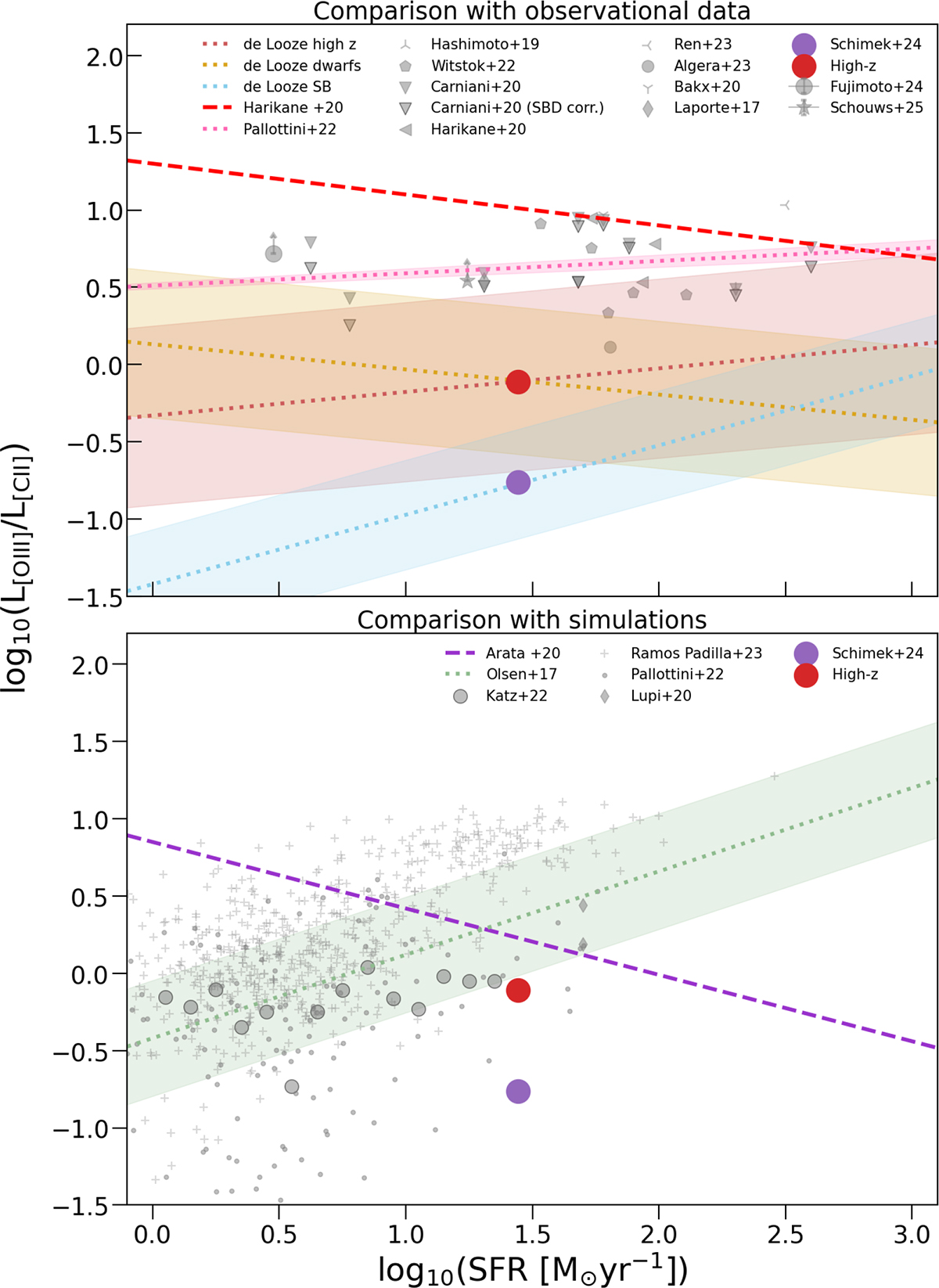Fig. 6.

Download original image
Total [O III]/[C II] line luminosity ratio as a function of SFR for the High-z model (red) and Schimek et al. (2024a,b) (purple). The top panel reports the comparison with observational data from Hashimoto et al. (2019) at z ∼ 7, Witstok et al. (2022) at z = 6.7 − 7, Carniani et al. (2020) at z ∼ 6 − 9, missing [C II] flux corrected values from Carniani et al. (2020) (SBD corr.) at z ∼ 6 − 9, Harikane et al. (2020) at z ∼ 6, Ren et al. (2023) at z = 7.2, Algera et al. (2024) at z = 7.3, Bakx et al. (2020) at z = 8.31, Laporte et al. (2017) at z = 8.3, Fujimoto et al. (2024) at z = 8.5 (lower limit), and Schouws et al. (2025a,b) at z = 14.2 (lower limit). The relations included are the z = 6 − 9 relation from Harikane et al. (2020), the best-fit relation from Pallottini et al. (2022), and the high-redshift, local dwarfs, and local starbursts (SBs) relations from De Looze et al. (2014). The bottom panel reports the comparison with simulation studies by Katz et al. (2022) (z = 6), Ramos Padilla et al. (2023) (z = 6), Pallottini et al. (2022) (z = 7.7), and Lupi et al. (2020) (z = 6). The relations are from Arata et al. (2020) (z = 6 − 9) and Olsen et al. (2017) (z ≃ 6).
Current usage metrics show cumulative count of Article Views (full-text article views including HTML views, PDF and ePub downloads, according to the available data) and Abstracts Views on Vision4Press platform.
Data correspond to usage on the plateform after 2015. The current usage metrics is available 48-96 hours after online publication and is updated daily on week days.
Initial download of the metrics may take a while.


